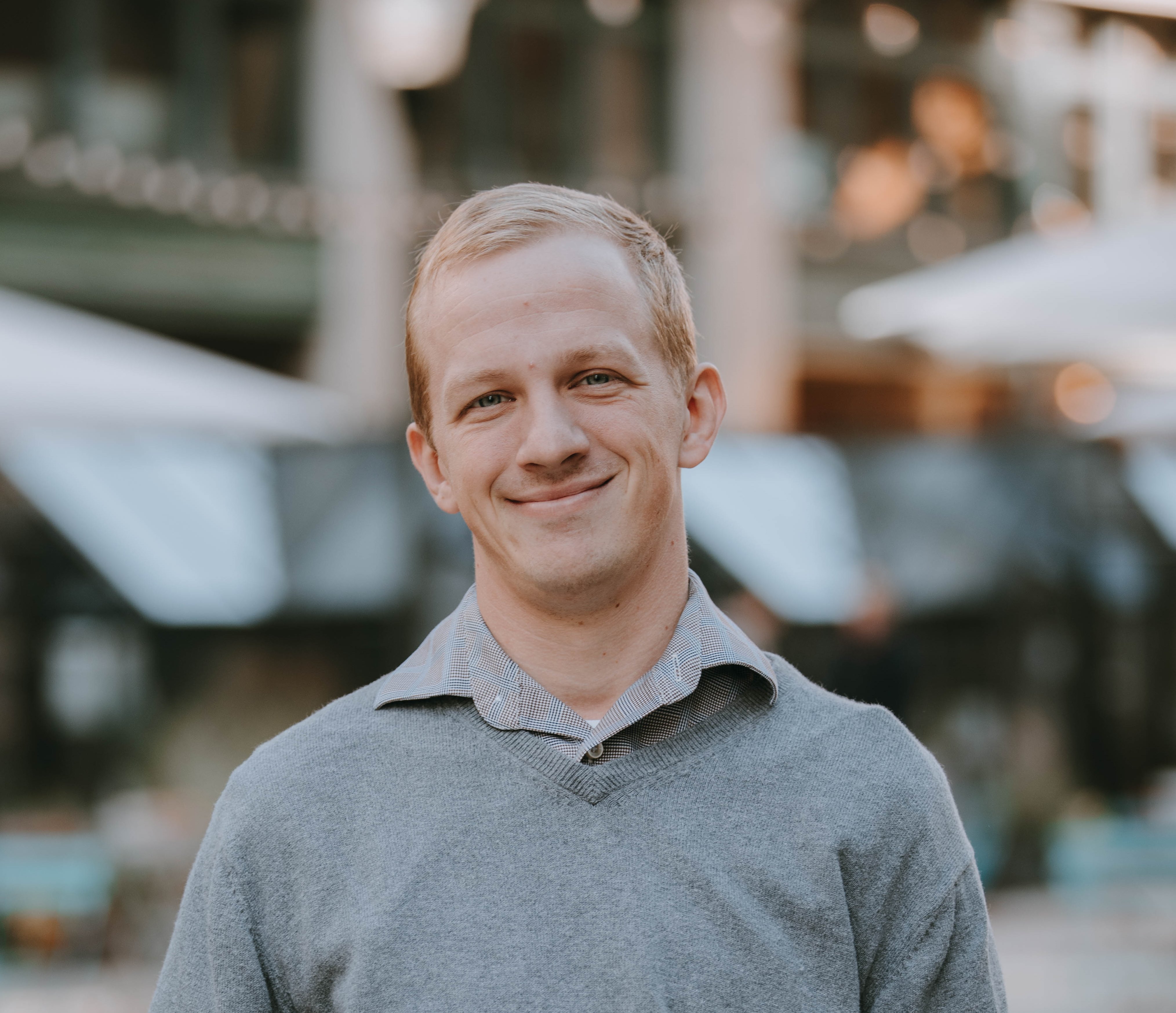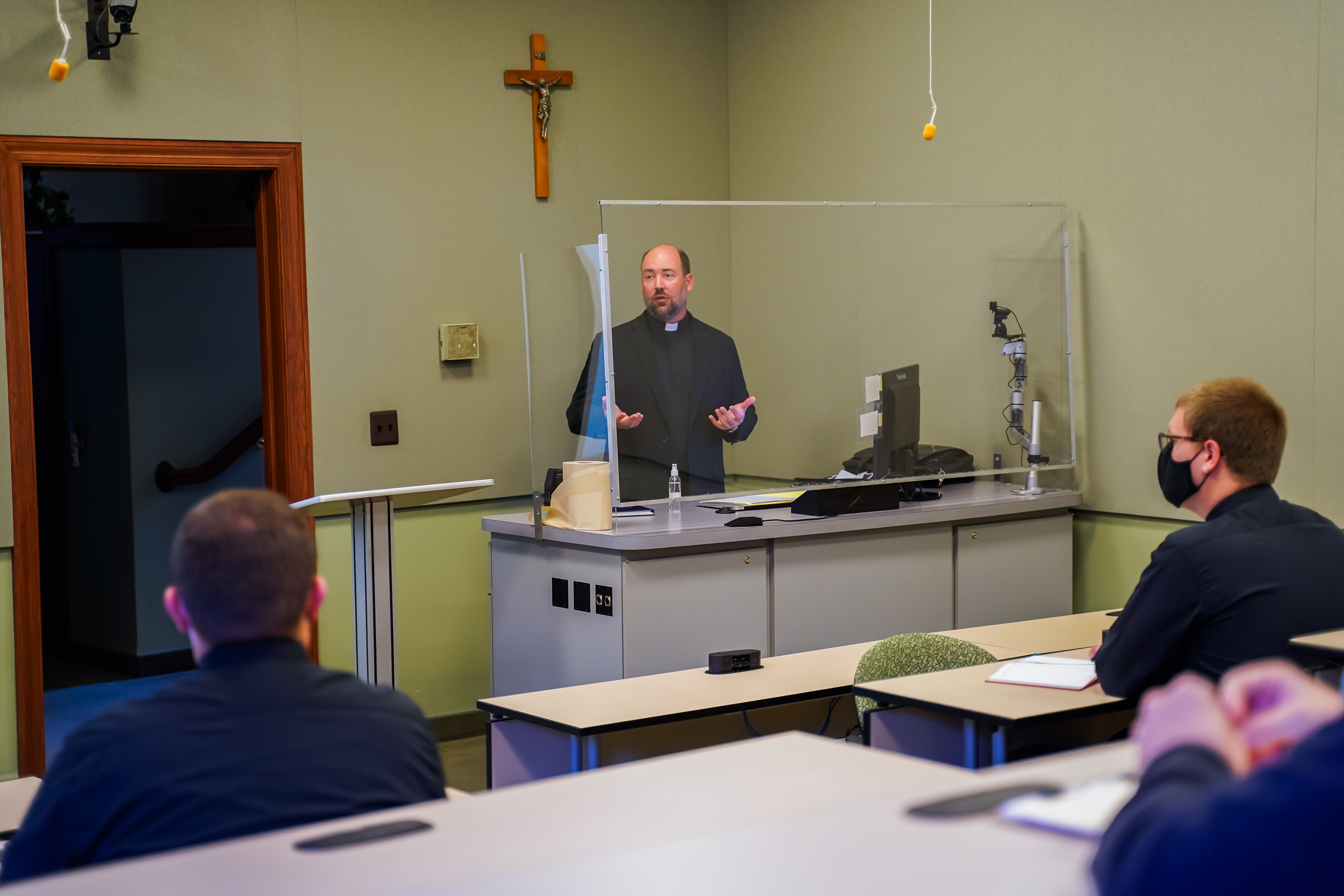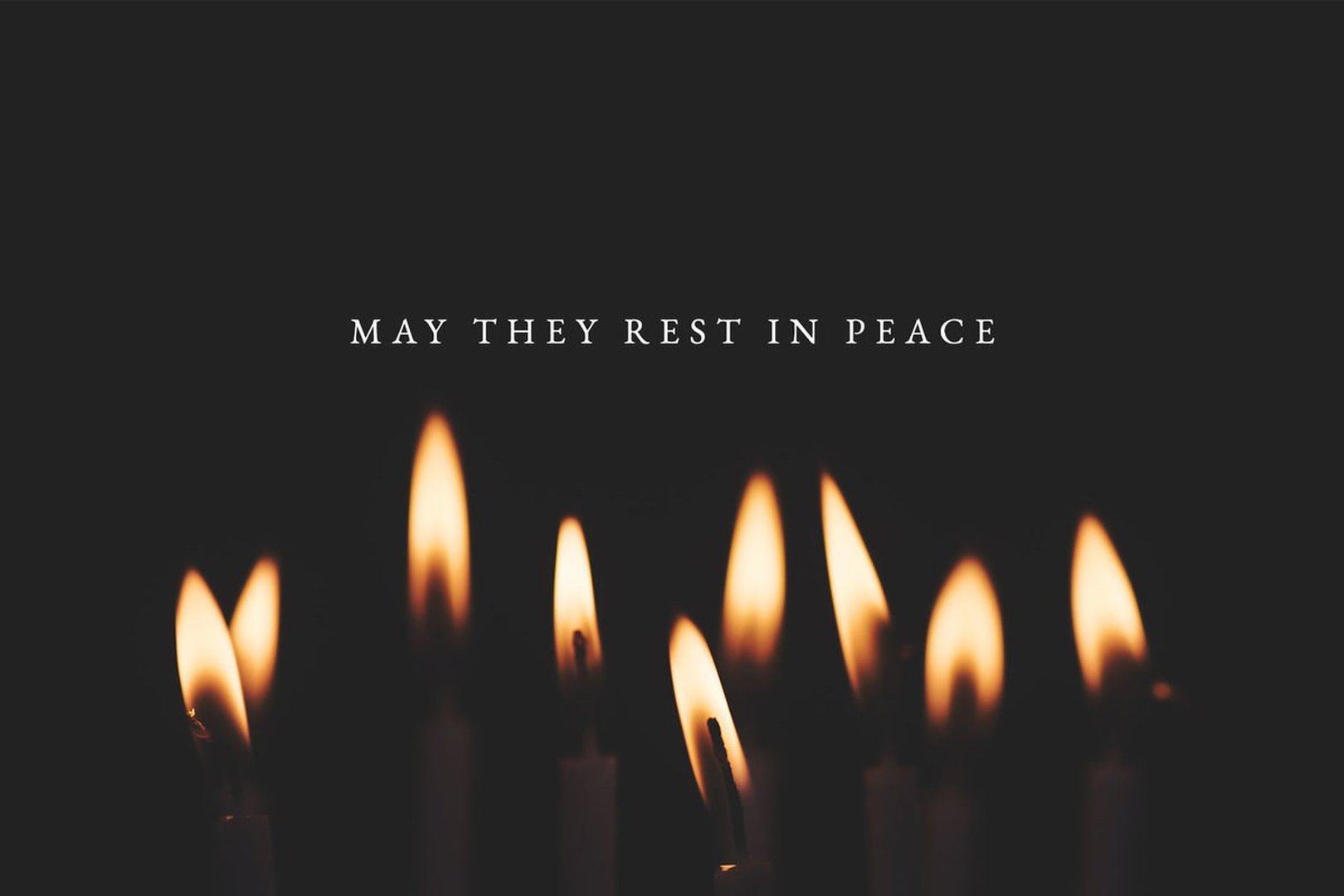Enrollment healthy as seminarians, lay students and instructors face historic challenges head on — all with confidence in God
During September and October, Detroit Catholic is asking readers to prayerfully consider a gift to the Catholic Services Appeal, which funds more than 170 ministries vital to the Church in southeast Michigan, including this publication. Visit www.givecsa.org to support the mission by making a gift today. We are grateful for your generosity and prayers.
DETROIT — The differences are profound, but Sacred Heart Major Seminary’s mission is the same: form men for the priesthood and prepare all of its students, laity and clergy, to be ambassadors for the new evangelization.
In a world where face masks, social distancing, online learning and virtual events have become the norm, the Detroit seminary is forging ahead, educating and forming the next generation of priests and evangelists.
Vice rector Fr. Stephen Burr said this year’s 114 seminarians, representing 16 dioceses and religious communities, are seeing changes to classrooms, liturgical schedules and safety protocols, but the seminary still intends to provide the full formation experience.
“We are trying to keep the two major schools, the graduate school and undergraduate school, separate throughout the year, shifting our liturgical schedule and creating separation between the two houses of men,” Fr. Burr, who also serves as dean of seminary formation, told Detroit Catholic. “We’re following the same protocols the archdiocese has given about the amount of people allowed in a chapel, making sure people are spaced out.”

Fr. Burr said the seminary’s chapel is technically big enough to accommodate everyone, but for safety’s sake, chapel time is being split up.
In addition to the seminarians, who live in dorms on campus, Sacred Heart Major Seminary hosts 292 commuter students as part of its lay formation program, which has a different schedule as officials work to keep the two sets of students apart.
“We have a few rooms set aside for use by our lay commuters,” said Matthew Gerlach, Ph.D., dean of the Institute for Lay Ministry and associate professor of theology. “Commuter students can still get meals in the cafeteria at special times reserved for them, bringing their food into the Bishop Gallagher Parlor. We have other larger rooms, such as the Ward Library and the Cardinal Szoka Library, where tables are spaced out for students to socialize and study.”
Besides changes to the classrooms, which include plexiglass dividers to keep lecturers and professors separated from students as well as physical distancing between students, Sacred Heart also is closely considering other elements of the formation experience, such as the movements of transitional deacons to or from assignments or bringing in guests speakers on different topics related to priestly ministry.
Transitional deacons “will still go out and do ministry on a regular basis,” Fr. Burr said, “but we’ve limited them to going out once and then coming back, instead of spending the night at the parish. We still want them at the parish, but we want them to stay in one residence throughout the semester.”
Most seminary students have the option of taking courses online, should they choose. While professors are structuring classes so students can attend in person, Sacred Heart also uses the Canvass Learning Management System to support its online and seated courses.

“Those who may be at risk or are uncomfortable attending classes in-person had many online class options to choose from this fall,” Gerlach said. “About half of all lay commuters enrolled this fall are taking at least one online class. So you can see how appealing this option is amidst the pandemic.”
Some pandemic casualties this year include the cancellation of the seminary’s annual Halloween Trick-or-Treat neighborhood event, liturgies in which seminarians’ families are invited and the annual Christmas concert.
An Alpha course seminarians had been helping lead at Our Lady of Good Counsel Parish in Plymouth as part of their field education has also been substituted with an online Alpha course hosted from the school’s grounds.
But for all of the changes and challenges, men still have the desire to study for the priesthood, and lay disciples want to learn more about their faith and equip themselves for ministry. This year, 32 new seminarians are enrolled, on par with last year, when 31 new men entered.
On the commuter side, this year’s 292 students is a slight drop from last years’ 311, but considering the circumstances, enrollment is still beating expectations, Gerlach said.
“While everyone in higher education was concerned students would not return to classes this fall, we found that our lay commuter students really wanted to continue their education and formation, and find strength and support in the Sacred Heart community they love so dearly,” Gerlach said. “The seminary and Archdiocese offer generous financial assistance to those in ministry and so the economic challenges many people are facing today are not keeping them from continuing.”

While COVID-19 has changed some of the approach to education and formation, God is still calling men to the priesthood, even in the midst of a pandemic, said Fr. Craig Giera, director of priestly vocations for the Archdiocese of Detroit.
“The men I’m speaking with now seem to have a calling in their heart to serve other people, doing things that are meaningful,” Fr. Giera said. “They feel God is speaking to them in their hearts and are open to the priesthood.”
While no one has specifically said COVID-19 spurred them to discern a vocation, Fr. Giera said, “some have felt the situation has helped them focus on something they have felt for a very long time.”
The Archdiocese of Detroit added three new seminarians this year, with 26 men in total currently studying for the priesthood.
Fr. Giera, in his first year as vocations director, said his office soon will launch a campaign to encourage Catholics in southeast Michigan to pray the Luminous Mysteries of the rosary for an increase in vocations.
“The Luminous Mysteries are how Christ manifests who he was,” Fr. Giera said. “The Luminous Mysteries are about Christ’s very public priesthood, and we want to encourage men to take up that public priesthood.”
Thirteen dioceses currently send seminarians to Sacred Heart for formation, but a new — or rather, returning — addition this year is the Diocese of Gary, Ind. The diocese, led by Detroit native Bishop Robert McClory, has two new seminarians at Sacred Heart.

“The demographics and economics between Gary and Detroit are very similar, so we feel it’s a good place for our priests to study,” Fr. Christopher Stanish, associate director of vocations for the Diocese of Gary and a graduate of Sacred Heart Major Seminary, told Detroit Catholic.
Another factor in the diocese’s decision was Sacred Heart’s reputation for forming men according to the new evangelization, Fr. Stanish said.
“Sacred Heart is a hub of studies for the new evangelization, and this is a great place to be formed for the priesthood of Jesus Christ,” Fr. Stanish said. “Whether for those sitting in the church or those fallen away, knowing nothing of Jesus, Sacred Heart does a great job in forming the heart of a shepherd.”
Besides Detroit and Gary, other dioceses represented at Sacred Heart including Lansing (16 seminarians), Marquette (7), Kalamazoo (5), Gaylord (2), Saginaw (4), Hartford, Conn. (8), Winona-Rochester, Minn. (8), Steubenville, Ohio (3), Toledo, Ohio (3), Madison, Wis. (2), and the Chaldean Eparchy of St. Thomas the Apostle (7).
Three religious communities — the Companions of the Cross (16), Franciscan Friars of the Holy Spirit (5), and the Society of Our Lady of the Most Holy Trinity (SOLT) (4) — also send seminarians to Sacred Heart.










